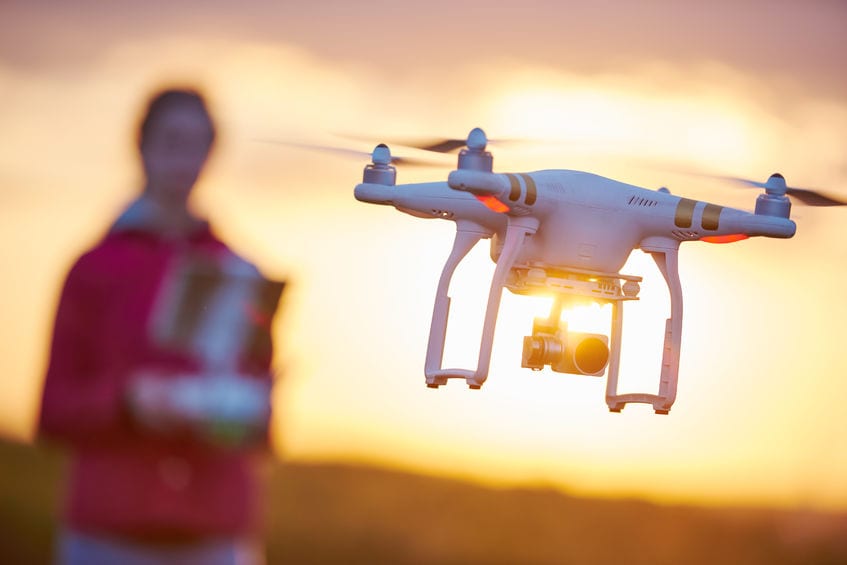
News
Drone Community Applauds Overwhelming Approval of FAA Reauthorization Bill
Drone Community Applauds Overwhelming Approval of FAA Reauthorization Bill
Although by no means the final step required for the long-term authority needed by the Federal Aviation Administration (FAA) to ensure strong, continued growth of the commercial drone industry in the USA, the passing of H.R. 4, the FAA Reauthorization Act of 2018 in the House of Representatives last Friday has been met with applause from various members of the American drone community.
The bill, which will bring an end to the short-term extensions that have limited the long-term planning sorely needed by the FAA to establish certainty in the unmanned aviation industry, covers a range of issues relating to hobby and commercial drone use. It was passed on Friday 27th April, 2018 with a nearly unanimous bipartisan vote of 398-13.
The rules concerning unmanned aircraft which the House considered in the passing of this Bill include:
- 26. Modifies existing prohibition in regard to FAA issuing any regulation on model aircraft flown for hobby/recreational purposes and provides FAA flexibility to collaborate with industry to update operational parameters needed for unmanned aircraft flown for hobby/recreational purposes, to mitigate risks to aviation safety and national Security.
- 27. Ensures the role of state and local government is considered during an emergency situation where an unmanned aircraft system may pose a threat to public Safety.
- 28. Codifies the Department of Transportation’s Unmanned Aircraft Systems Integration Pilot Program
- 29. Directs FAA to establish a program to utilize available remote detection and identification technologies for safety oversight, including enforcement actions against operators of unmanned aircraft systems that are not in compliance with applicable Federal aviation laws, including regulations. Requires annual reporting by FAA to Congress to report the number of drones entering restricted airspace, the number of enforcement cases brought by FAA or other agencies, and recommendations by FAA for detection and mitigation systems.
- 30. Requires the Administrator of the Federal Aviation Administration to issue regulations necessary to authorize the use of certain actively tethered public unmanned aircraft systems by government public safety agencies without any requirement to obtain a certification of waiver, certificate of authorization, or other approval by the Federal Aviation Administration.
- 33. Directs the FAA to partner with nongovernmental organizations, state, and local agencies to prevent recreational unmanned aircrafts from interfering with the efforts of emergency responders.
- 47. Establishes prohibitions to prevent the use of unmanned aircraft systems as a weapon while operating in the national airspace.
The next step required before the FAA Reauthorization Act becomes law will be for the Senate to discuss and formulate their own version of the bill. Then, both the House and the Senate bills will be considered by a Joint Committee so that a final Act may be drafted for legislation.
Several organisations concerned with all things UAV have come forward with statements confirming their support of the Bill’s approval.
Jenny Rosenberg, Executive Director of the recently formed voice for unmanned manufacturers, suppliers and developers, the Alliance for Drone Innovation (ADI), said, “With the passage of H.R. 4, the House of Representatives is standing firmly behind innovation in aviation and the future of unmanned flight. We are grateful to Chairman Shuster and Reps. Sanford and Davis for shepherding language that promotes aviation safety among recreational drone users while allowing for continued growth in this exciting sector. We look forward to working with leaders of both parties in the Senate to ensure adoption of this important provision.”
The Small UAV Coalition, which represents a group of companies whose interests lie strongly in keeping the USA at the forefront of drone technology, also expressed support of the Bill, and “looks forward to working with all stakeholders to ensure that the bill that reaches the President’s desk supports industry-driven UTM development and implementation and does not spur unnecessary or unintentional regulatory action related to spectrum.”
While the Academy of Model Aeronautics (AMA) expresses that certain provisions have cause for concern (although they don’t explicitly say which ones), in a statement on their blog they say, “We are happy to share that Section 336, also known as the Special Rule for Model Aircraft, is included in this bill with meaningful refinements that we supported to help make it stronger.”
'Protecting our hobby is AMA’s top priority and we will do everything possible to ensure your ability and freedom to fly.' Share on X
It is expected to be some months before the Senate is ready to commit their own version for consideration by the Joint Committee but there are strong motivations to do so before the current legislative authorisation of the FAA expires this September.
The FAA’s ability to continue its work in the safe and secure integration of UAVs into managed airspace will benefit greatly from being able to take a long-term approach to planning.
In September of 2017, the FAA Small Drone Rule (Part 107) saw 80,000 individual drones registered and given the ability to fly for commercial and government purposes. By January of this year over a million drones were registered, a strong indication of the incredible growth this industry is experiencing in the USA.
Several more recent decisions by the FAA such as a waiver to fly at night for the Property Drone Consortium, and the first BVLOS authorization in the USA awarded to Xcel Energy are important moves in establishing a strong and thriving drone industry.
The commencement of a nationwide beta test today of the Low Altitude Authorization and Notification Capability (LAANC) across approximately 500 airports means to improve facilitation of approvals under the Part 107 rule through data sharing. With the final deployment of the LAANC expected to commence on September 13, 2018, one thing is sure – the approval of the FAA Reauthorization Act by the House of Representatives has come not a moment too soon.


















